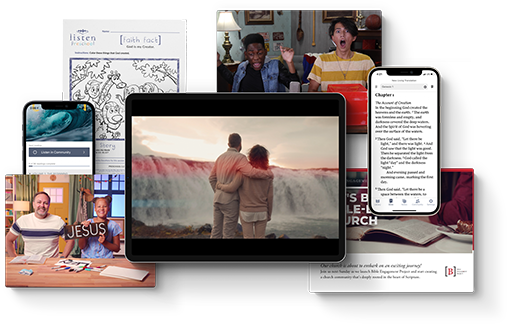The Public Reading of Scripture
By Jeffrey Arthurs | Posted In Ministry Tools
Almost 70 years ago, the Scottish preacher W.E. Sangster offered this rebuke and encouragement: “Bible reading offers the widest scope for the enrichment of public worship and it is a great pity that the Scriptures are often so badly read. When the Book is well read and made to live for the people, it can do for them what sermons often fail to do: it can be the very voice of God to their souls.”
Sangster’s words apply today as well. Many churches — including Bible-believing congregations with a conservative theology of Scripture — limit their public reading to just the passage being preached. And even that reading is often slapdash and dry. In fact, sometimes there seems to be an inverse relationship: the higher the view of Scripture, the lower the priority on public reading.
Minimalist practice hardly fulfills the apostle Paul’s command to “devote yourself to the public reading of Scripture” (1 Timothy 4:13). The Greek word translated “devote” (prosecho) means “to pay attention to, or apply oneself.” Paul’s command was essential for a pastor in the first century because few people could read, and manuscripts were rare.
Today, nearly everyone who attends church can read, and copies of the Bible are as common as dandelions in my front yard, but the command is still necessary. Biblical literacy is low, and many Christians have not been discipled to read and meditate on the Word as a regular spiritual discipline.
Scripture minimalists probably don’t know that they are out of step with the historic Church (and many liturgical churches today). The New Testament Church followed the practice of synagogue worship with readings from the Law, Prophets and Writings. Eventually, the Church settled into the pattern of reading from the Old Testament, Gospels and epistles.
In the second century, Justin Martyr reported people in Rome gathering to hear the Scriptures “as long as time permits.”
During the Reformation, the Church rediscovered the Word, and lengthy passages were read in formal and informal gatherings.
Puritan services in 18th-century American colonies, around the time of Jonathan Edwards, read an Old Testament lesson and a New Testament lesson, covering at least a chapter each, and sang a metrical psalm.
Why did the Church follow such practices? The rationale goes back to covenant renewal ceremonies in the Old Testament, as when Josiah read “all the words of the Book of the Covenant” (2 Kings 23:2, NIV) to remind the people of God’s promises and requirements. We need reminders, so pastors should devote themselves to public reading.
Here are eight ways to increase the quantity and quality of public reading in services:
1. Read more than the passage for the sermon. The old formula of reading from the Old Testament, a Gospel, and an epistle may be worth reviving. Choose passages that go along with the theme of the sermon.
2. Practice. We often assume public reading requires no preparation, but just as a musical performance calls for rehearsal, so does a performance of Scripture. My use of the term “performance” does not imply the reading should be theatrical, but public speaking is different from interpersonal speaking and calls for a different set of skills.
When Scripture reading is done well, it can be the voice of God to the soul.
For example, we should practice eye contact. It does not need to be unbroken, but it should be regular. Make it your goal to look at the listeners about 50% of the time. At the very least, start and end with eye contact.
Should a Scripture reader use gestures? It may depend on the speaker’s personal style and the tone and content of the text. Holding a Bible or standing behind a lectern can make movement difficult. Yet gestures may be effective at times. Practice and ask for feedback to determine what is helpful and what is distracting.
3. Use inflection and pauses. The voice is the primary medium of communication, and the words you emphasize can make a difference in how people hear and interpret the text.
Verbs and nouns transport the freight of meaning. In most cases, you will want to emphasize these. For instance, you might emphasize Psalm 23:2 this way: “He makes me lie down in green pastures.”
When reading aloud, most pauses will be brief, but two or three longer ones in key places can help convey the emotional and ideational content of the passage. You might read John 3:16 this way:
For God so loved the world
that he gave his one and only Son,
that whoever believes in him shall not perish …
but have eternal life.
4. Slow down. Many people read too quickly. They speak at the rate their minds grasp the material, not at a rate that is helpful to someone who is hearing the material fresh. A moderate rate may feel slow to the reader, but it rarely feels slow to the listener.
5. Prepare the script. You might want to print out the passage in large font with colors, underlining, slashes, and other visual markers to help your eyes focus easily. However you choose to prepare the script, the key is to make the act of reading easy rather than laborious.
6. Begin with an introduction. A brief introduction increases attention, comprehension and retention. If we just plunge into the text, the listeners have no context for grasping the meaning and mood.
For example, you might introduce Philippians 1:12-18 this way: “Paul was in jail. He was chained because of the gospel. But he was also joyful. How can someone bound in chains feel the joy of the Lord? Listen to the testimony of the apostle.”
7. Be creative. Don’t be afraid to try a new approach. For instance, have someone act out or sign the text. Or do a group reading — such as having parents and children read portions of the household code in Ephesians 5–6.
Incorporate music or visual art. Show some slides, or have an artist create something during the reading. I once attended a reading of Jeremiah 18 that included a pottery demonstration.
Leverage the power of proxemics. This communication studies term refers to the physical location of communication. Consider changing things up by reading the passage while seated, or stepping down from the platform into the midst of the congregation.
Another idea is to place readers in the four corners of the sanctuary.
Even just having the congregation stand during the reading sets it apart from the other elements of the service and heightens attention.
8. Recruit and train a group of lay readers. Some members of your church are gifted in this kind of communication, so use them. Consider training worship team members and others for public reading.
When Scripture reading is done well, it can be the voice of God to the soul.


